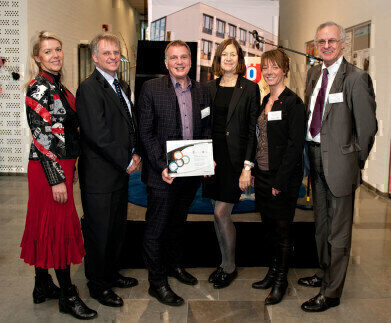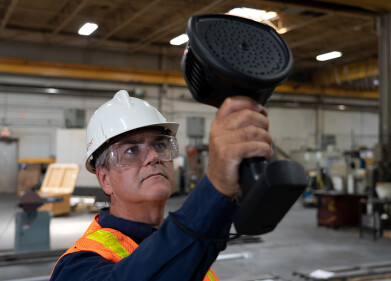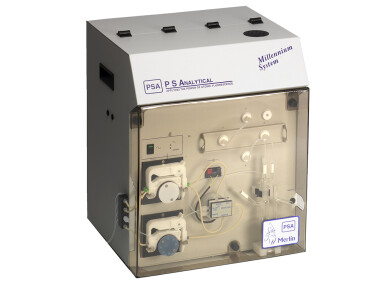Environmental laboratory
Research Centre at Örebro University Chosen for Centre of Innovation Honours
Nov 20 2012
At a ceremony at the School of Science and Technology at Örebro University (Örebro, Sweden) Waters (USA) announced the selection of the MTM Research Centre for its Centres of Innovation Program for research in the field of persistent organic pollutants (POPs) now regulated under provisions of the Stockholm Convention. The MTM Research Centre under the direction of Professor Bert van Bavel has earned a reputation for excellence in the area of POPs analysis and the development of analytical methods for tracking quantities of POPs in the environment and for quantifying human exposure to these harmful contaminants. His research also supports the United Nations Environment Programme aimed at building capacity for POPs analysis by training scientists and advising laboratories in state-of-the-art methods.
POPs are released into the air, water, and soil/sediments primarily from the incineration of municipal wastes, combustion of fossil fuels or as bi-products of metal, pulp and paper manufacturing processes. Once in the environment, they don’t disappear. POPs have been linked to numerous diseases including cancer, insulin resistance, and are believed to be endocrine disruptors.
Speaking at a ceremony on campus, Matilda Ernkrans, a Member of the Swedish Parliament and the Chair of the Committee on the Environment said, “Waters establishment of a Centre of Innovation at the MTM Research Centre is an important contribution to environmental research and a great recognition making me very proud.” She told the audience that she’s concerned about the combined effects of POPs on humans. “Last year, two MTM scientists tested my blood and found traces of dangerous chemicals including PCBs and DDT, chemicals which have been forbidden for a long time and are still circulating in the environment,” she said. “There are many of us who want to know more so we can have a better understanding of the risks we are being subjected to, and that is why the work that is being carried out the MTM Research Centre with support from Waters, is so important.”
“The establishment of a Centre of Innovation at MTM Research Centre initiates a new phase in our collaboration with Waters. It means we will be able to put more resources on projects we design together and gives us access to the most modern technology which is very important for us,” said Professor Bert van Bavel. “As a reference laboratory for UNEP we need to have top-of-the-line instrumentation to keep our status and to keep us at the forefront of science. We’re looking forward with excitement to a fruitful collaboration and to achieving the ambitious goals we have set for ourselves.”
“At Waters we believe in the Science of What’s Possible and the idea that there is nothing that science can’t help solve. We are very lucky to have found at Örebro University in the MTM Research Centre a partner that shares our belief in science and education. Using science to help safeguard our environment is a challenge worth investing in,” said Andre Ayache, Vice President and General Manager, European Operations, Waters Division.
The MTM Research Centre is currently investigating LC/MS as a tool for more sensitive, selective and efficient methods of POPs analysis, particularly fluor compounds. To take its research to the next level, it recently took delivery of a benchtop ACQUITY I-Class UPLC® System and Xevo® TQ-S Mass Spectrometer equipped with an APGC ion source.
The Waters Xevo TQ-S tandem mass spectrometer represents a step change in targeted quantitative UPLC/Multiple Reaction Monitoring (MRM) analysis. This system is capable of accurately measuring target compounds in complex samples at femtogram levels or below.
The Xevo TQ-S features new StepWave ion-transfer technology, a revolutionary off-axis design for dramatically increasing the efficiency of ion transfer from the ion source to the quadrupole MS analyser while at the same time actively eliminating undesirable neutral contaminants. This gives the Xevo TQ-S impressive class-leading sensitivity. When compared to earlier generation mass spectrometer models the chromatographic peak areas are typically more than 30 times bigger and the signal-to-noise ratios are typically 5 to 10 times better.
The APGC source is unique in that it allows scientists to make exact mass LC/MS/MS and GC/MS/MS measurements on a single Xevo TQ-S Mass Spectrometer eliminating the need to dedicate a mass spectrometer for LC/MS/MS work and another to GC/MS/MS work.
Digital Edition
AET 28.4 Oct/Nov 2024
November 2024
Gas Detection - Go from lagging to leading: why investment in gas detection makes sense Air Monitoring - Swirl and vortex meters will aid green hydrogen production - Beyond the Stack: Emi...
View all digital editions
Events
Jan 20 2025 San Diego, CA, USA
Carrefour des Gestions Locales de L'eau
Jan 22 2025 Rennes, France
Safety, Health & Wellbeing LIVE
Jan 22 2025 Manchester, UK
Jan 25 2025 San Diego, CA, USA
Jan 29 2025 Tokyo, Japan



















